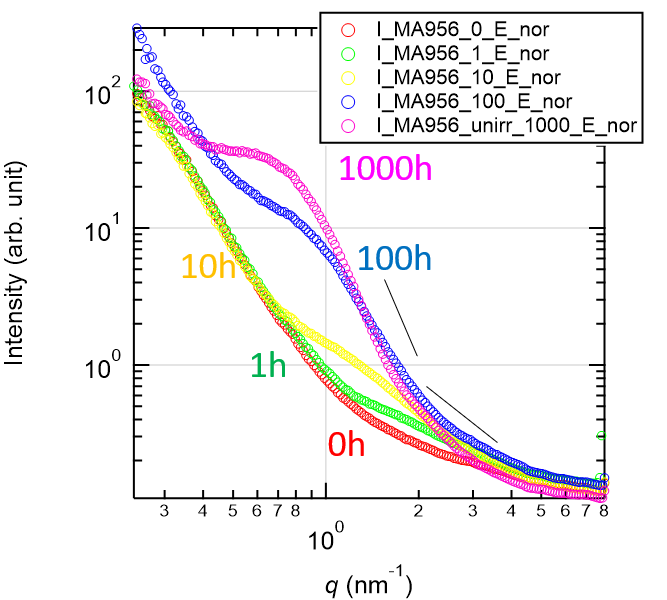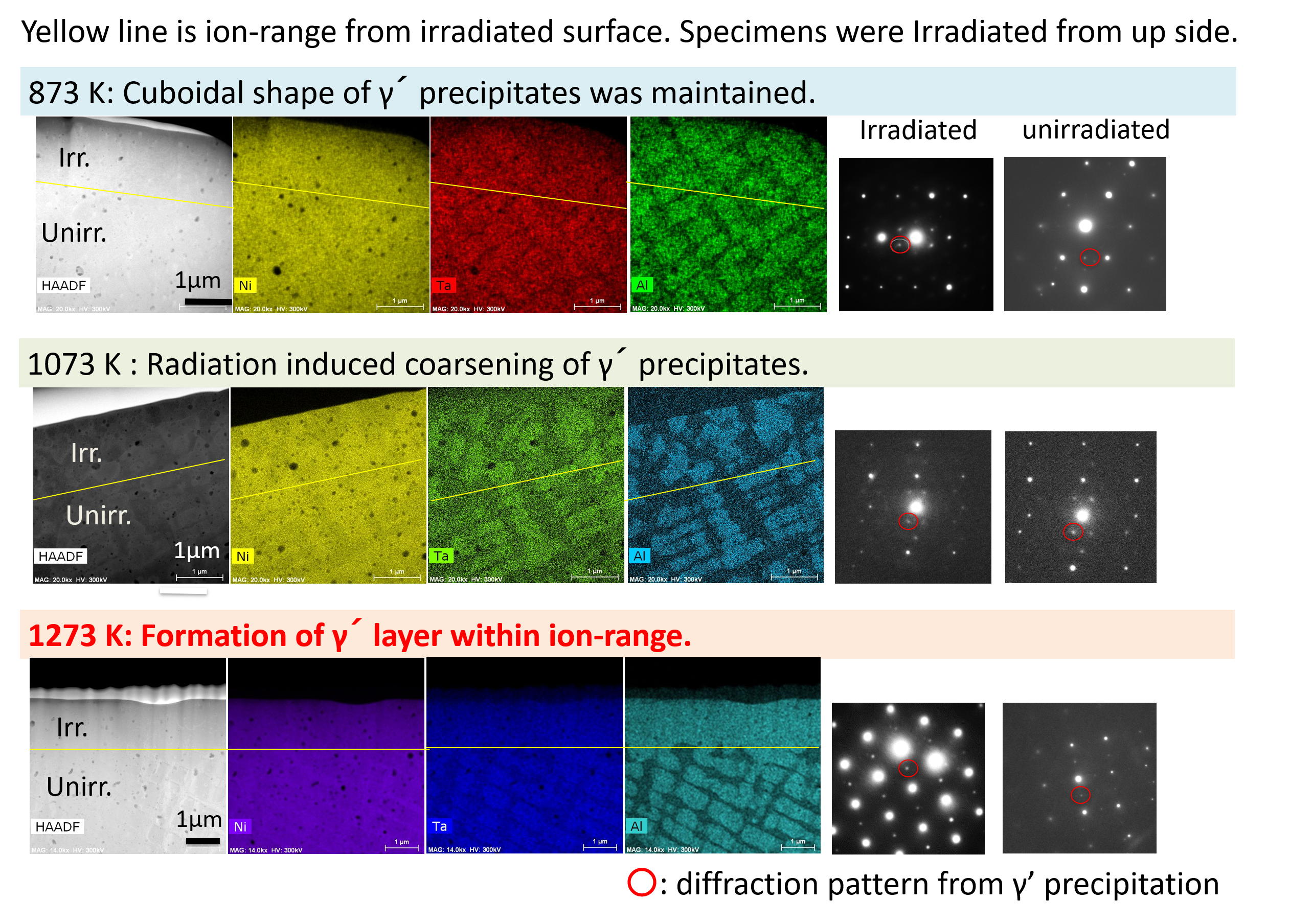
Generation IV nuclear reactors are superior because of its safety and high-efficiency. However, the materials constructing reactors are exposed at high-temperature in heavy irradiation conditions. It is essential to understand the materials behavior when it is damaged by neutron irradiation. In my group, follows are researched.
Fe-Cr alloys are candidate for Lead-cooled Fast Reactor: LFR used at 673-873 K which is a kind of Generation IV nuclear reactor because of its high resistance of oxidation and irradiation. However, Cr amount exceeds 20 wt.% in these alloys are embrittled by using at about 773 K for long term because Cr-rich precipitations were shaped. On the other hand, the process how to shape the Cr-rich precipitates was not clarified by experimental issues. Thus, we use the anomalous small-angle X-ray scattering (A-SAXS) method which is best application for analysis of the Cr-rich precipitates. Fig. 1 shows the results by A-SAXS of the samples heat-treated at 748 K for long term at Fe-20wt.%Cr. From this results, the size and number density of Cr-rich precipitates increase prolonging the heat treatment time. In addition, there is a clearly difference of the precipitate process. We need to clarify the detailed mechanism of precipitation.

Ni-based alloys are candidate for Gas-cooled fast reactor (GFR) and Very High-Temperature Reactor (VHTR) used at 1073-1273 K which are the kind of Generation IV nuclear reactor because of its high-temperature strength. However, γ' precipitates which maintain strength at high-temperature in Ni-based alloys are disordering by the irradiation even at 873 K. We used developed Ni-based alloy to be dispersed fine oxide particles because this material is expected to suppress the transformation of γ'precipitates by irradiation. Fig. 2 shows the irradiated and unirradiated area. We can success to maintain the γ' shape up to at 1073 K. On the other hand, the irradiated area became wholly composed of γ' layer after irradiation at 1273 K. This mechanism may be explained by considering three phenomena. First, the distribution of solute elements became homogeneous due to increasing Gibbs free energy caused by the radiation-induced disordering of γ' precipitates. Second, the formation of surface layer with the composition of γ' precipitates was caused by the evaporation of solute elements under high vacuum condition. Third, the crystal structure is stabilized as ordered γ' layer during cooling. We research this behavior using the irradiation instruments simulated the real environments to evaluate more accurately.
